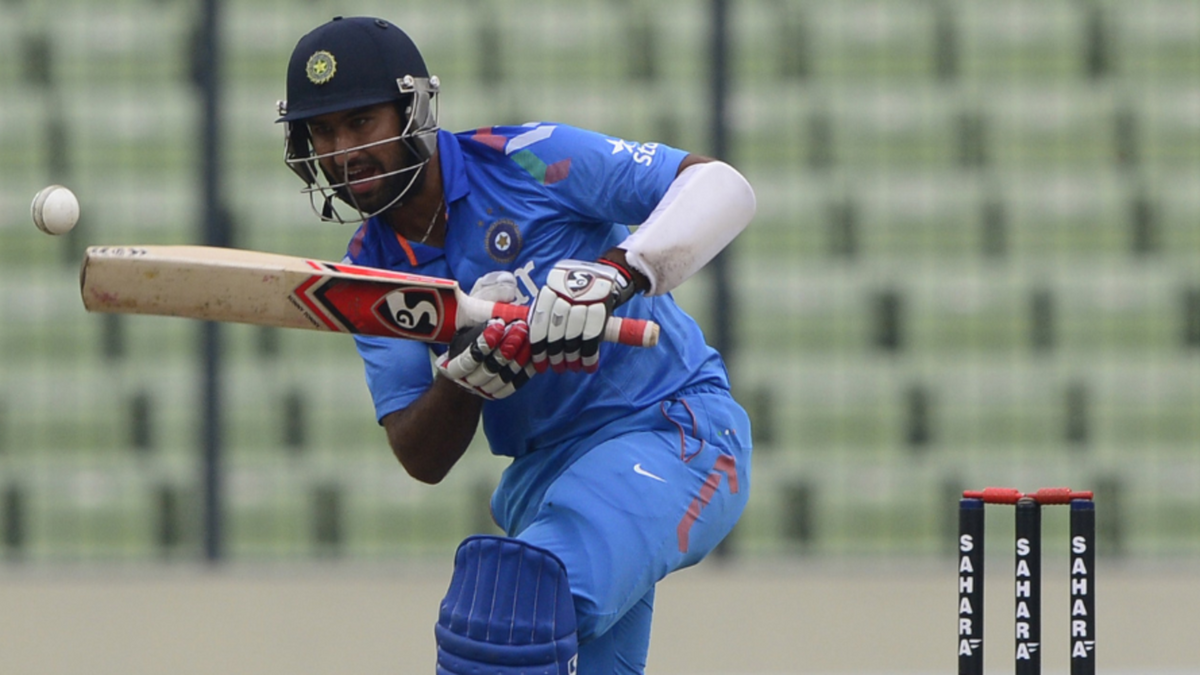
Cheteshwar Pujara burst onto the Test scene with a sumptuous 72 against Australia. His ODI career, though, neither took off in similar fashion, nor scaled the heights of his Test career, writes Shashwat Kumar.
Whenever speaking about Pujara, the first thought is of a stoic batter who puts a massive price on his wicket. He grafts his way through tough situations, takes brutal blows on the body, refuses to budge from the crease, and outlasts vicious spells from the finest in the world.
The ability to buckle down has fetched him handsome rewards in Test cricket. Despite not being in great form of late in international cricket, Pujara is India’s ninth-highest run-scorer in Tests. Another 76 runs runs will take him past Dilip Vengsarkar.
In limited-overs cricket, though, the same attributes – of waiting for the right moment to attack, of opting for caution, of grinding bowling attacks into submission – are not quite in vogue. It is not that Pujara is not a fine white-ball player. Put a 50-innings cut-off, and he has the seventh-best List A average of all time. Among Indians, only Ruturaj Gaikwad and Virat Kohli have better tallies. Unfortunately, with the resources India had at their disposal in the 2010s, and the manner in which the ODI game was evolving, Pujara simply could not establish a foothold on the international stage.
A blip: that was all
Pujara’s ODI debut came in 2013, as part of a second-string Indian squad that toured Zimbabwe under a young Kohli. He did not feature in the first three games of the five-match series, and got an ODI cap only when India sewed up the series. Opening batting alongside Rohit Sharma, who had impressed at the recently concluded ICC Champions Trophy, Pujara could only manage a 24-ball 13 before Tendai Chatara cleaned him up.
A few days later, Pujara was dismissed for a duck. He then travelled to Bangladesh, where he scored 0, 11, and 27. These innings, as things stand, remain Pujara’s only ones in ODI cricket. His career aggregate stands at 51 runs in five innings, at a strike rate of 39.23, despite not playing a top side. One can hardly blame the selectors.
There was no slot in the Indian squad either. Rohit had just found his feet as an opener; Shikhar Dhawan had taken the world by storm; Kohli was showing no signs of stopping; and in Ajinkya Rahane and Suresh Raina, India had solid middle-order batters too. The only way India could have accommodated Pujara was at Rahane’s expense. However, Rahane was a superior strokeplayer, as he had demonstrated in his brief ODI career at that point.
In another era, India could used him to blunt the new ball or to establish a foundation for their strokeplayers. By the early 2010s, however, ODI cricket had moved away from this template. Twenty20 cricket had encouraged batters to play their shots earlier than they used to.
Pujara’s ODI career, thus, never really took off. Nor did it ever feel like it would mirror what he accomplished in Test cricket. It was primarily because the traits that he brought to the fore and were deeply cherished in Test cricket, were not quite what India needed in fifty-over cricket. His skillset did not necessarily allow him to stand out among a bunch of promising batters, helps further explain an ODI career that never was.
Now, as he continues to make merry for Sussex, plundering runs at will at breakneck pace, one cannot help but add him to the long list of “what ifs” in Indian cricket. What if he had got another series back then – and turned things around in emphatic manner? Have we not seen many cricketers do that in the past?








